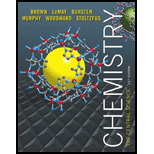
Concept explainers
The methane molecule, CH4, has the geometry shown in Figure 2.17. Imagine a hypothetical process in which the methane molecule is "expanded, " by simultaneously extending allfour bonds C-H bonds to infinity. We then have the process:
(a) Compare this process with the reverse of the reaction thatrepresents the standard enthalpy of formation of CH4(g).
(b) Calculate the enthalpy change in each case. Which is themore endothermic process? What accounts for the difference inΔHo values? (c) Suppose that 3.45 g CH4(g) reacts with1.22 g F2(g), forming CH4(g) and HF(g) as sole products. What is the limiting reagent in this reaction? If reaction occurs at constant pressure, What amount of heat is evolved?
Want to see the full answer?
Check out a sample textbook solution
Chapter 5 Solutions
Chemistry: The Central Science (13th Edition)
- Compounds with carboncarbon double bonds, such as ethylene, C2H4, add hydrogen in a reaction called hydrogenation. C2H4(g)+H2(g)C2H6(g) Calculate the enthalpy change for this reaction, using the following combustion data: C2H4(g)+3O2(g)2CO2(g)+2H2O(l);H=1411kJC2H6(g)+72O2(g)2CO2(g)+3H2O(l);H=1560kJH2(g)+12O2(g)H2O(l);H=286kJarrow_forwardWhich of the enthalpies of combustion in Table 5.2 the table are also standard enthalpies of formation?arrow_forwardNiagara Falls has a height of 167 ft (American Falls). What is the potential energy in joules of 1.00 lb of water at the top of the falls if we take water at the bottom to have a potential energy of zero? What would be the speed of this water at the bottom of the falls if we neglect friction during the descent of the water?arrow_forward
- Is the following reaction the appropriate one to use in determining the enthalpy of formation of methane, CH4(g)? Why or why not? C(g)+4H(g)CH4(g)arrow_forward9.73 Without looking up any numerical data or doing calculations, predict whether the enthalpy change for each of the following reactions should he positive, negative, or zero. (a) H2O(l)H2O(s) (b) N2(g)2N(g) (c) CH4(g)+2O2(g)CO2(g)+2H2O(l) (d) CO2(s)CO2(g)arrow_forwardWhat mass of acetylene, C2H2(g), must be burned to produce 3420 kJ of heat, given that its enthalpy of combustion is 1301 kJ/mol? Compare this with the answer to Exercise 5.91 and determine which substance produces more heat per gram.arrow_forward
- Hydrogen peroxide, H2O2, is a colorless liquid whose solutions are used as a bleach and an antiseptic. H2O2 can be prepared in a process whose overall change is H2(g)+O2(g)H2O2(l) Calculate the enthalpy change using the following data: H2O2(l)H2O(l)+12O2(g);H=98.0kJ2H2(g)+O2(g)2H2O(l);H=571.6kJarrow_forwardWhen 2.50 g of methane burns in oxygen, 125 kJ of heat is produced. What is the enthalpy of combustion per mole of methane under these conditions?arrow_forwardA 0.470-g sample of magnesium reacts with 200 g dilute HCl in a coffee-cup calorimeter to form MgCl2(aq) and H2(g). The temperature increases by 10.9 C as the magnesium reacts. Assume that the mixture has the same specific heat as water and a mass of 200 g. (a) Calculate the enthalpy change for the reaction. Is the process exothermic or endothermic? (b) Write the chemical equation and evaluate H.arrow_forward
- The enthalpy change for the following reaction is 393.5 kJ. C(s,graphite)+O2(g)CO2(g) (a) Is energy released from or absorbed by the system in this reaction? (b) What quantities of reactants and products are assumed? (c) Predict the enthalpy change observed when 3.00 g carbon burns in an excess of oxygen.arrow_forwardThe complete combustion of acetylene, C2H2(g), produces 1300. kJ of energy per mole of acetylene consumed. How many grams of acetylene must be burned to produce enough heat to raise the temperature of 1.00 gal water by 10.0c if the process is 80.0% efficient? Assume the density of water is 1.00 g/cm3arrow_forwardA 10.00-g sample of acetic acid, HC2H3O2, was burned in a bomb calorimeter in an excess of oxygen. HC2H3O2(l)+2O2(g)2CO2(g)+2H2O(l) The temperature of the calorimeter rose from 25.00C to 35.84C. If the heat capacity of the calorimeter and its contents is 13.43 kJ/C, what is the enthalpy change for the reaction?arrow_forward
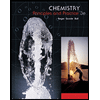 Chemistry: Principles and PracticeChemistryISBN:9780534420123Author:Daniel L. Reger, Scott R. Goode, David W. Ball, Edward MercerPublisher:Cengage Learning
Chemistry: Principles and PracticeChemistryISBN:9780534420123Author:Daniel L. Reger, Scott R. Goode, David W. Ball, Edward MercerPublisher:Cengage Learning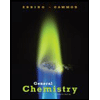 General Chemistry - Standalone book (MindTap Cour...ChemistryISBN:9781305580343Author:Steven D. Gammon, Ebbing, Darrell Ebbing, Steven D., Darrell; Gammon, Darrell Ebbing; Steven D. Gammon, Darrell D.; Gammon, Ebbing; Steven D. Gammon; DarrellPublisher:Cengage Learning
General Chemistry - Standalone book (MindTap Cour...ChemistryISBN:9781305580343Author:Steven D. Gammon, Ebbing, Darrell Ebbing, Steven D., Darrell; Gammon, Darrell Ebbing; Steven D. Gammon, Darrell D.; Gammon, Ebbing; Steven D. Gammon; DarrellPublisher:Cengage Learning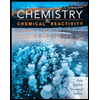 Chemistry & Chemical ReactivityChemistryISBN:9781337399074Author:John C. Kotz, Paul M. Treichel, John Townsend, David TreichelPublisher:Cengage Learning
Chemistry & Chemical ReactivityChemistryISBN:9781337399074Author:John C. Kotz, Paul M. Treichel, John Townsend, David TreichelPublisher:Cengage Learning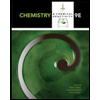 Chemistry & Chemical ReactivityChemistryISBN:9781133949640Author:John C. Kotz, Paul M. Treichel, John Townsend, David TreichelPublisher:Cengage Learning
Chemistry & Chemical ReactivityChemistryISBN:9781133949640Author:John C. Kotz, Paul M. Treichel, John Townsend, David TreichelPublisher:Cengage Learning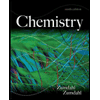
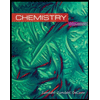 ChemistryChemistryISBN:9781305957404Author:Steven S. Zumdahl, Susan A. Zumdahl, Donald J. DeCostePublisher:Cengage Learning
ChemistryChemistryISBN:9781305957404Author:Steven S. Zumdahl, Susan A. Zumdahl, Donald J. DeCostePublisher:Cengage Learning





